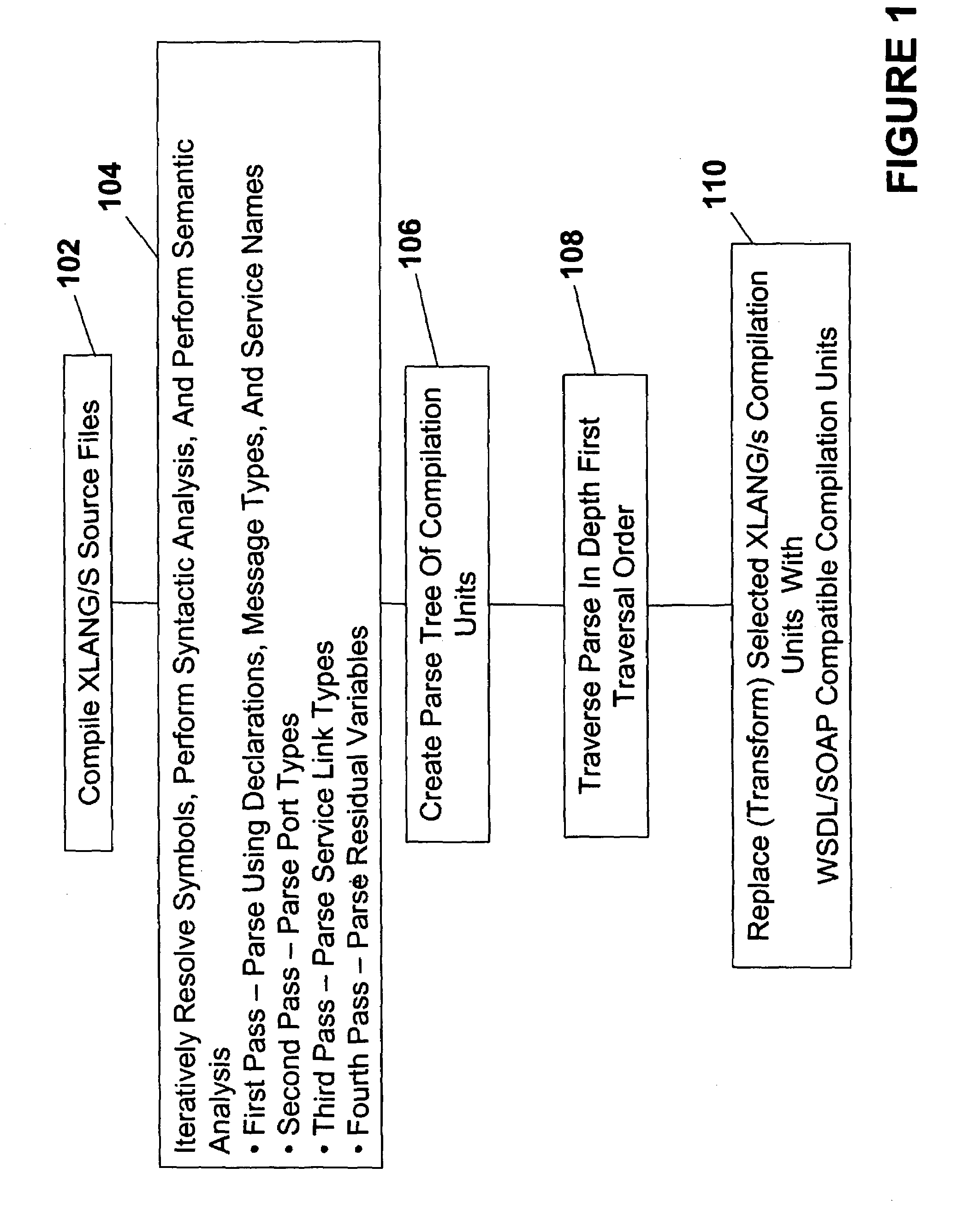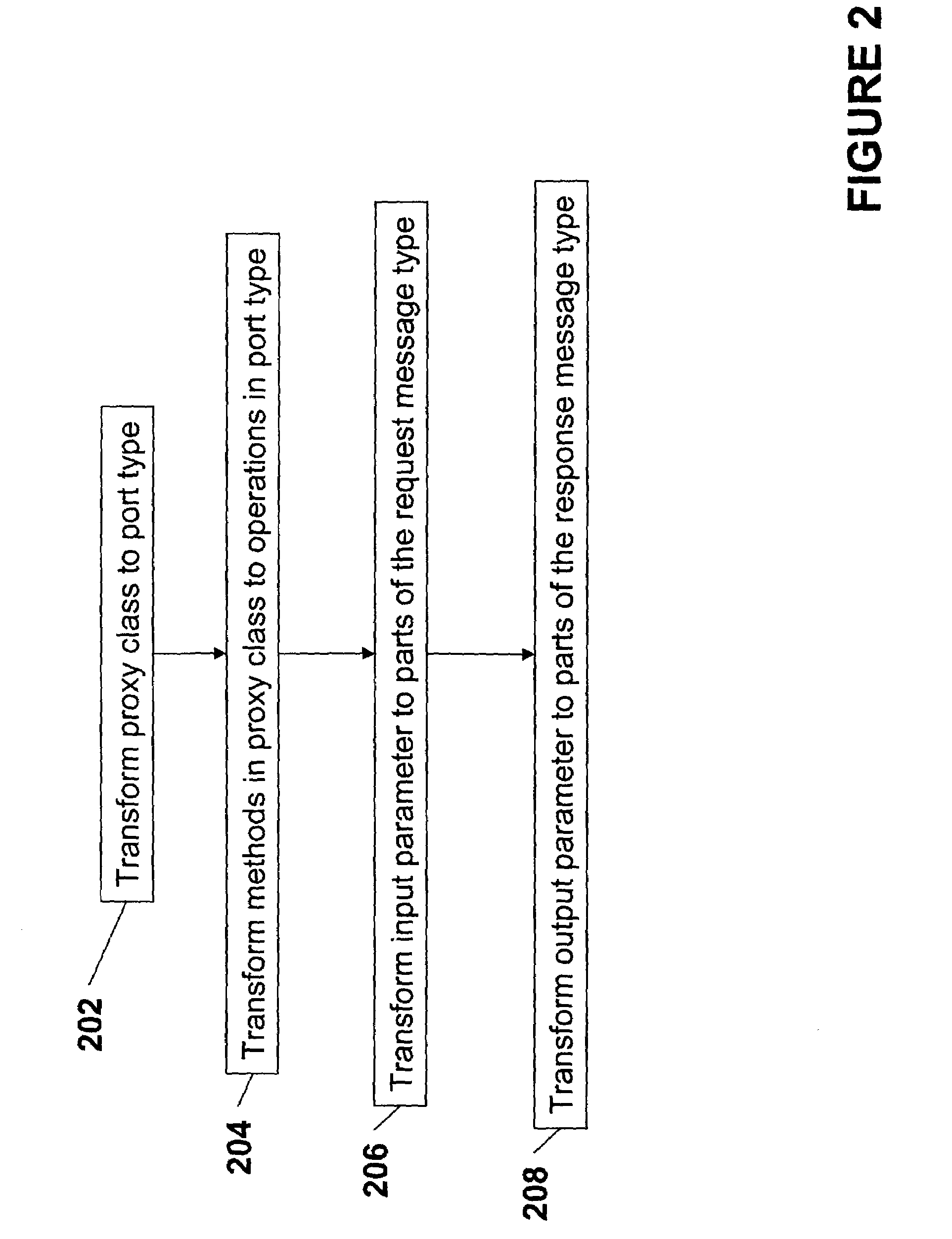Transformation of an asynchronous transactional messaging language into a web services compatible language
a technology of asynchronous transactional messaging and asynchronous transactional messaging, which is applied in the direction of instruments, digital computers, computing, etc., can solve the problems of not being able to meet the requirements of every protocol, all transport mechanisms are not compatible with all business applications, and it is difficult, if not impossible, to program an asynchronous transactional messaging business application to meet every protocol requiremen
- Summary
- Abstract
- Description
- Claims
- Application Information
AI Technical Summary
Problems solved by technology
Method used
Image
Examples
Embodiment Construction
[0013]A technique in accordance with the present invention makes web services compatible with asynchronous transactional messaging languages. In one embodiment, instructions in the asynchronous transactional messaging language, XLANG / s are mapped, or transformed, into instructions that are compatible with the web services description language (WSDL) and simple object access protocol (SOAP) messages. As described in more detail below, proxy classes are transformed into port types, methods of the proxy classes are transformed into operations, and the input and output parameters of the operations are transformed into request message types and response message types, respectively. This is accomplished by compiling the XLANG / s source files in an iterative compilation process. During each pass of this compilation process, different XLANG / s variables are parsed. The compilation results in compilation units. These units are logically organized in a tree structure. The tree structure is trav...
PUM
 Login to View More
Login to View More Abstract
Description
Claims
Application Information
 Login to View More
Login to View More - R&D
- Intellectual Property
- Life Sciences
- Materials
- Tech Scout
- Unparalleled Data Quality
- Higher Quality Content
- 60% Fewer Hallucinations
Browse by: Latest US Patents, China's latest patents, Technical Efficacy Thesaurus, Application Domain, Technology Topic, Popular Technical Reports.
© 2025 PatSnap. All rights reserved.Legal|Privacy policy|Modern Slavery Act Transparency Statement|Sitemap|About US| Contact US: help@patsnap.com



